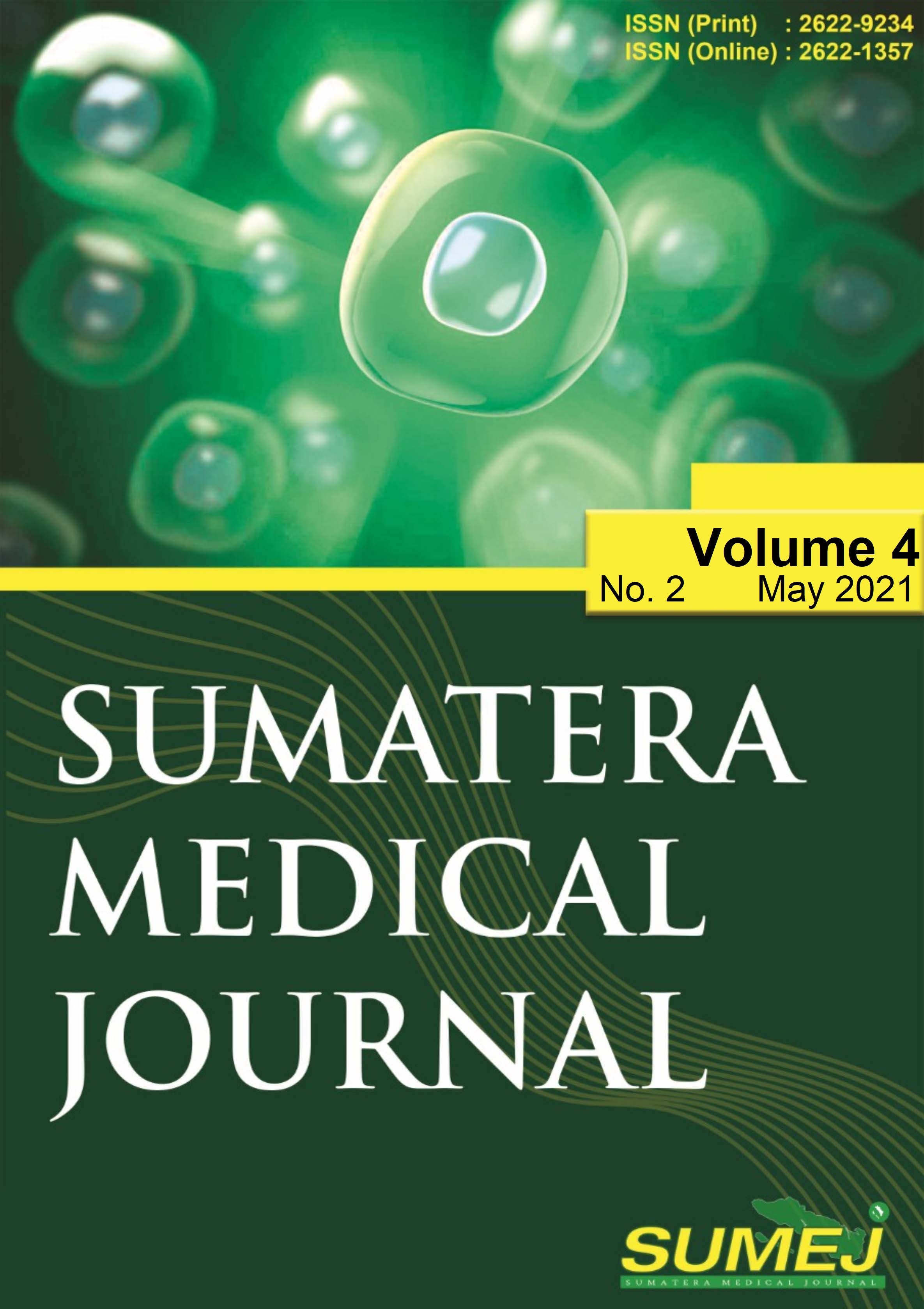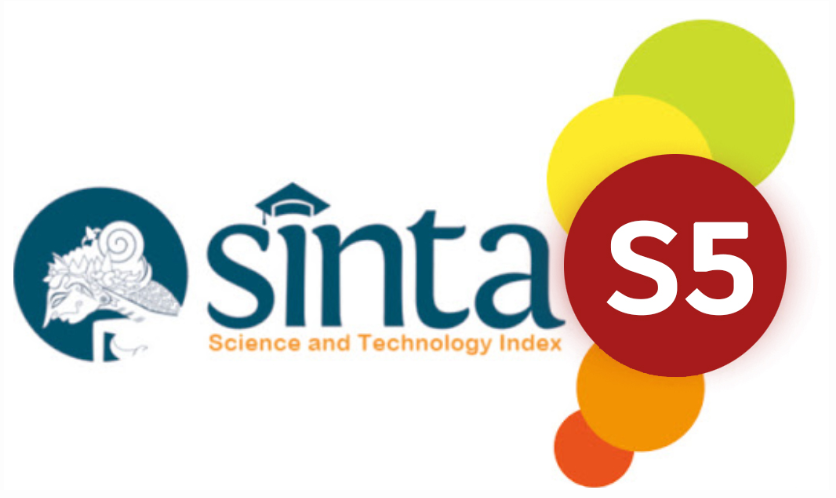Correlation of Stress Levels and the Incidence of Pityriasis Sicca in Final Year Students of the Faculty of Medicine, Universitas Sumatera Utara Class of 2017
DOI:
https://doi.org/10.32734/sumej.v4i2.5775Keywords:
Pityriasis sicca, Dandruff, Stress, Sebum, Malassezia spAbstract
Background: Pityriasis sicca is a non-inflammatory skin disorder. The symptoms such as white or gray scales that accumulate on the surface of the scalp or in a localized place, peels easily and usually with itching. There are three main factors that cause Pityriasis sicca. Stress stimulates the body to increase sebum production in the sebaceous glands. Objective: To know the correlation between stress levels and incidence of Pityriasis sicca in the final year students of the Faculty of Medicine, Universitas Sumatera Utara class of 2017. Methods: This was an analytical study with a cross-sectional design, started from July 2020 until October 2020. Sampling was carried out using a total sampling technique. The data were obtained using univariate and bivariate statistical analysis. Results: Univariate analysis showed 102 respondents were at a normal stress level (40.3%) and there were 105 respondents (41.5%) who suffered from Pityriasis sicca, total samples were 253 respondents. From the bivariate analysis, it was found that there is a significant correlation between stress levels and the incidence of Pityriasis sicca. Conclusion: There is correlation between stress levels and the incidence of Pityriasis sicca in class 2017 students of the Faculty of Medicine, Universitas Sumatera Utara.
Downloads
References
Adiguna, M. S. “Pitiriasis sika: Is That Pityriasis Amantacea?†in Kumpulan Makalah Symposium – Nattional Symposium & Workshop Erythrosquamous Disorders, Ilmu Kesehatan Kulit dan Kelamin Fakultas Kedokteran Universitas Udayana, 2016, pp.3-12. [Online] Available: Google Books
Schwartz, J. R., DeAngelis, Y. M. & Dawson, T. L.â€Pitiriasis sika and seborrheic dermatitis: A head scratcher†in Practical Modern Hair Science, Evans, T. & Wickett, R. R., Eds. German: Wissenschaftliche, 2012, pp. 389-414. [Online] Available: Google Books
Sommer, B., Overy, D. P. & Kerr, R. G. “Identification and characterization of lipases from Malassezia restricta, a causative agent of pitiriasis sika,†FEMS Yeast Research, vol. 15, no. 7, pp. 1-8, 2015.
Trueb, R. M. “The impact of oxidative stress on hair,†International Journal of Cosmetic Science, vol. 37, no. 2, pp. 25-30, 2015.
Schwartz, J. R. & Dawson, T. L. “Pitiriasis sika and Seborrheic Dermatitis†in Textbook of Cosmetic Dermatology, Baran, R. & Maibach, H. I., Eds. 5th edn, Boca Raton: CRC Press, 2017, [Online] Available: Google Books
Manuel, F. & Ranganathan, S. “A new postulate on two stages of pitiriasis sika: A clinical perspective,†International Journal of Trichology, vol. 3, no. 1, pp. 1-6. 2011.
Utami, A. R., Sukohar, A., Setiawan, G. & Morfi, C. W. “Pengaruh penggunaan pomade terhadap kejadian dandruff pada remaja pria,†Majority, vol. 7, no. 2, pp. 187-192. 2018.
Chhavi, S., Sushma, D. & Mohammad, A. “Potential of herbal as antipitiriasis sika agents.†International Research Journal of Pharmacy, vol. 2, no. 3, pp. 16-18. 2011.
Gaol, N. T. L. “Teori stres: Stimulus, respons, dan transaksional,†Buletin Psikologi, vol. 24, no. 1, pp. 1-11. 2016.
Saif, G. A., Alotaibi, H. M., Alzolibani, A. A., Almodihesh, N. A., Albraidi, H. F., Alotaibi, N. M., & Yosipovitch, G. "Association of psychological stress with skin symptoms among medical students,†Saudi Med J, vol. 39, no. 1, pp. 59-66. 2018.
Yuni, A. & Utami, N. “Faktor-faktor yang menyebabkan kejadian dandruff pada siswi berjilbab di SMA Muhammadiyah 1 Pekanbaru,†Ensiklopedia of Journal, vol. 2, no. 5, pp. 79-88. 2020.
Devanthan, V. “Feature Article: The Dandruff Menace,†Science Report, pp. 24–27. 2013.
Sarafino, E. P. & Smith, T. W. Health Psychology Biopsychosocial Interactions, 7th edn, John Wiley & Sons, United States, 2011.
Ro, B. I. & Dawson, T. L. “The role of sebaceous gland activity and scalp microfloral merabolism in the etiology of seborrheic dermatitis and pitiriasis sika,†Journal of Investigative Dermatology Symposium Proceedings, vol. 10, no. 3, pp. 194-197. 2005.
Downloads
Published
How to Cite
Issue
Section
License
Copyright (c) 2021 Sumatera Medical Journal

This work is licensed under a Creative Commons Attribution-NonCommercial-NoDerivatives 4.0 International License.
The Authors submitting a manuscript do so on the understanding that if accepted for publication, copyright of the article shall be assigned to Sumatera Medical Journal (SUMEJ) and Faculty of Medicine as well as TALENTA Publisher Universitas Sumatera Utara as publisher of the journal.
Copyright encompasses exclusive rights to reproduce and deliver the article in all form and media. The reproduction of any part of this journal, its storage in databases and its transmission by any form or media, will be allowed only with a written permission from Sumatera Medical Journal (SUMEJ).
The Copyright Transfer Form can be downloaded here.
The copyright form should be signed originally and sent to the Editorial Office in the form of original mail or scanned document.











